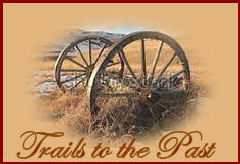|
Progressive Men
Index
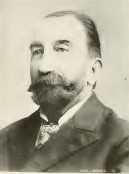 HENRY E. LADD
One of the Minneapolis pioneers whose prosperity has
been identified with the growth and development of the
city is Mr. H. E. Ladd, now a prominent real-estate
dealer and a member of the firm of Ladd & Nickels. HENRY E. LADD
One of the Minneapolis pioneers whose prosperity has
been identified with the growth and development of the
city is Mr. H. E. Ladd, now a prominent real-estate
dealer and a member of the firm of Ladd & Nickels.
Mr. Ladd comes of a family which has taken an
interest in preserving its genealogical records, and he
is therefore able to trace his ancestry back to Daniel
Ladd, who came over from England in 1623. Daniel Ladd
first settled at Epswich. In 1649 he was allotted lands
at Haverhill, Massachusetts, and for six succeeding
generations his descendants remained in this vicinity.
Perley M. Ladd, Mr. H. E. Ladd’s father, married Miss
Hannah Reidhead, a descendant of Hannah Dustin, of
Haverhill, whose heroic escape from captivity among the
Indians in 1697 has preserved her memory among the
heroines of early American history. The famous cloth in
which Hannah Dustin carried the scalps has lately been
left to Mr. Ladd.
H. E. Ladd was born at Salem, Rockingham County,
New Hampshire, December 17, 1847. When five years old,
his father moved to Haverhill, where his ancestors had
lived for so long, and young Henry grew up in the
vicinity of his forefathers. When Henry was nineteen
years of age the family removed to Minneapolis. The young man
was willing to accept any honest occupation and at first
was employed in taking tolls at the old suspension
bridge. After obtaining a foothold in his new home he
opened a fruit and confectionery store at No. 216
Hennepin Avenue. This business was afterward removed to
Washington Avenue, and continued until 1874 when its
proprietor sold out. He went East, and during his
absence married Miss Anna M. Hagar, daughter of Reuben
Hagar, of Union, Maine. Mr. Ladd spent a year in the
East, and in 1877 again embarked in the confectionery
business. But again he sold out, and made a trip to the
Pacific coast.
Returning to Minneapolis he engaged in the
real-estate business in 1880. He met with an unusual
degree of success. Five years later he took his present
partner and continued the business under the firm name
of Ladd & Nickels. The firm occupies a fine suite of
rooms on the second floor of the Minnesota Loan &
Trust Company’s Building, and conduct an extensive
real-estate and loaning business to which they have
added an insurance and rental department. Under prudent
and energetic management the business has reached large
proportions. One of their methods is to never guarantee
a loan. Within a few years past Mr. Ladd erected an elegant residence on Oak Grove
Street, where he now resides. It is a handsome specimen
of modern architecture. The material is cream-colored
Kasota stone, and though not large, the building is
complete and handsome in all its
details.
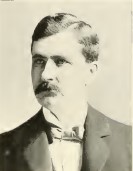 WILLIAM
ATWOOD LANCASTER is a member of the bar of Minneapolis,
where he has achieved an enviable reputation as a
careful and conscientious practitioner. Mr. Lancaster is
a son of Henry Lancaster, a farmer of moderate means,
who resided at Detroit, Maine. Both the father arid
mother of the subject of this sketch were of mixed
English and Scotch descent, but both were born and
reared in Albion, Maine. WILLIAM
ATWOOD LANCASTER is a member of the bar of Minneapolis,
where he has achieved an enviable reputation as a
careful and conscientious practitioner. Mr. Lancaster is
a son of Henry Lancaster, a farmer of moderate means,
who resided at Detroit, Maine. Both the father arid
mother of the subject of this sketch were of mixed
English and Scotch descent, but both were born and
reared in Albion, Maine.
Mr. Lancaster was born in Detroit, Maine, on
December 20.
1859. He attended the common schools of his
native village and subsequently entered the Maine
Central Institute, at Pittsfield, where he graduated in
1877. He then entered Dartmouth College, but left at the
end of his sophomore year to begin the study of law. He
read law in Augusta, Maine, with Gardiner C. Vose and
Loring Farr, and was admitted to practice in October,
1881. He removed to Boston, where he practiced law until
June, 1884. Returning to Augusta, Maine, he continued
the practice of his profession there until January,
1877. At this time he was attracted by the larger
opportunities of the growing west, and especially by the
inducements which Minneapolis had to offer as a place of
residence and business, and in January, 1887, he located
in this city and has been a resident of it ever since.
Mr. Lancaster has devoted himself exclusively to the
practice of his profession, never allowing his attention
or efforts to be diverted in any other lines. The result
has been a successful and constantly growing practice.
He has always been a Democrat, but has never held
any official position. He has, however, taken an active
interest in promoting the interests of his party in a
proper and legitimate way. He was a member in college of
the Delta Kappa Epsilon society, but has never
identified himself with any secret orders or other
organizations of that character since he entered active
life. On January 4, 1886, he was married to Kate I.
Manson, daughter of Dr. J. C. Manson, of Pittsfield,
Maine. They
have no children. Mr. Lancaster is just in his prime,
but has already attained the satisfaction of a
successful professional
career.
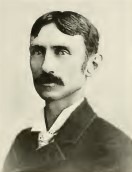 FREEMAN P.
LANE, is a lawyer of Minneapolis, the son of poor but
eminently respectable people of that city, who were able
to give him only those educational advantages afforded
by the common schools of the city. His father, Charles
W. Lane, is a mechanic, his trade being that of carriage
maker and blacksmith. His mother and father are both
living in this city. They are of Scotch and
Irish descent, honest people who have lived quiet and
uneventful but useful lives. FREEMAN P.
LANE, is a lawyer of Minneapolis, the son of poor but
eminently respectable people of that city, who were able
to give him only those educational advantages afforded
by the common schools of the city. His father, Charles
W. Lane, is a mechanic, his trade being that of carriage
maker and blacksmith. His mother and father are both
living in this city. They are of Scotch and
Irish descent, honest people who have lived quiet and
uneventful but useful lives.
Beyond this brief statement Mr.
Lane claims to know little about his ancestors,
although, as he uniquely puts it, he has been a
candidate for office. Freeman P. Lane was born in
Eastport, Maine, April 20, 1853. He came with his
parents to Minneapolis in 1861. From 1862 to 1865 he was
the official bill poster of the town, and served his
apprenticeship in business as a bootblack and newsboy,
where he learned self-reliance and was trained in the
severe school in which lads in his circumstances often
acquire those qualifications which make for success in
after life. During the summers of 1868 to 1871,
inclusive, he was employed in building telegraph lines
through Minnesota, Iowa and Dakota Territory. His
ambition, however was for professional life, and he
began the study of law with Albee Smith in the old
Academy of Music building, in 1872, and tried his first
case before J. L. Himes, a justice of the peace. He
attended the Albany Law School, at Albany, New York, in
1873 and 1874, and was admitted to practice in Albany in
May of the latter year.
He
returned to Minneapolis and began the practice of his
profession with George W. Hael, the style of the firm
being Lane & Hael. Subsequently James H. Giddings
became Mr. Lane’s partner. He remained in partnership
with Mr. Giddings for nine and a half years. He then
formed a partnership with Fred B. Dodge, the style of
the firm being Lane & Dodge. This partnership lasted
for five years, after which the firm became Lane &
Johnson, the new partner being Benjamin F. Johnson, with
whom Mr. Lane was associated
for two years. Since the dissolution of that firm Mr.
Lane has been associated in business with Frank P.
Nantz, under the name of Lane & Nantz. He has always
taken an active interest in local and state politics,
and was elected to the lower house of the legislature in
1888 as a Republican.
Mr.
Lane was married at Minneapolis, July 6, 1875, to Mollie
Lauderdale, daughter of William H. Lauderdale. They have
four children, Bessie, wife of Thomas F.
Maguire, Ina, wife of John E. Christian, Mabel
and Stuart.
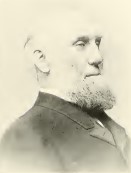 ROBERT BRUCE LANGDON From 1848, up to the
time of his death,. July 24, 1895,
Mr. Langdon was engaged in the construction of
railroads, and a full account of his life would almost
comprise a history of railroad building in the United
States during that period. Mr. Langdon was born on a
farm in New Haven, Vermont, November 24, 1826. On both his
father’s and mother’s side his ancestry was English. His
father, Seth Langdon, was an agriculturist, and was also
born at New Haven. His paternal grandfather was a
captain of a Massachusetts regiment in the Revolutionary
War. At its close he settled in Connecticut, but later
removed to Vermont, and was one of the pioneers of that
state. The mother of R. B. Langdon was of an English
family by the name of Squires. Robert Bruce Langdon grew
up to manhood in his native town, receiving his early
education in the district schools, which was
supplemented by a brief academical course. He began his
business career in 1848 as the foreman of a construction
company engaged in building the Rutland & Burlington
Railroad in Vermont. A short time later he left his
native state in the employment of Mr. Selah Chamberlain,
coming West, and for several years was engaged in
railroad construction work under his employer in Ohio
and Wisconsin.
The first contract Mr. Langdon received on his
own account was for fencing the Chicago &
Northwestern Railroad from Fond du Lac to Minnesota
Junction. In 1853 he had charge of the construction of a
section of seventy-five miles of the Illinois Central
road from Kankakee, Illinois, to Urbana, Ohio, and later
was engaged on contracts for the .Milwaukee & La
Crosse and the Milwaukee & Prairie du Chien
railroads. ‘The first ground broken for a railroad in
Minnesota was done under the direction of Mr. Langdon in
1858. At the outbreak of the Civil War he was compelled
to abandon the construction of the Mobile and Ohio
Railroad, on which he had been engaged two years. During
his business career as a railroad contractor, in
association with D. M. Carpenter, D. C. Shepard, A. H.
Linton and other gentlemen Mr. Langdon
constructed more than seven thousand miles of railroad
in the states of Vermont, Ohio, Wisconsin, Illinois,
Indiana, Minnesota, Tennessee, Mississippi, Iowa, the
Dakotas, Montana and the Northwest Territory. But in
addition to being one of the foremost railroad
contractors in the United States, he was connected with
the management of some of the most important lines in
the Northwest as a stockholder and director. He was vice
president and a director of the Minneapolis & St.
Louis Railroad, and for several years a vice president
of the Minneapolis, Sault Ste. Marie & Atlantic
Railroad. ROBERT BRUCE LANGDON From 1848, up to the
time of his death,. July 24, 1895,
Mr. Langdon was engaged in the construction of
railroads, and a full account of his life would almost
comprise a history of railroad building in the United
States during that period. Mr. Langdon was born on a
farm in New Haven, Vermont, November 24, 1826. On both his
father’s and mother’s side his ancestry was English. His
father, Seth Langdon, was an agriculturist, and was also
born at New Haven. His paternal grandfather was a
captain of a Massachusetts regiment in the Revolutionary
War. At its close he settled in Connecticut, but later
removed to Vermont, and was one of the pioneers of that
state. The mother of R. B. Langdon was of an English
family by the name of Squires. Robert Bruce Langdon grew
up to manhood in his native town, receiving his early
education in the district schools, which was
supplemented by a brief academical course. He began his
business career in 1848 as the foreman of a construction
company engaged in building the Rutland & Burlington
Railroad in Vermont. A short time later he left his
native state in the employment of Mr. Selah Chamberlain,
coming West, and for several years was engaged in
railroad construction work under his employer in Ohio
and Wisconsin.
The first contract Mr. Langdon received on his
own account was for fencing the Chicago &
Northwestern Railroad from Fond du Lac to Minnesota
Junction. In 1853 he had charge of the construction of a
section of seventy-five miles of the Illinois Central
road from Kankakee, Illinois, to Urbana, Ohio, and later
was engaged on contracts for the .Milwaukee & La
Crosse and the Milwaukee & Prairie du Chien
railroads. ‘The first ground broken for a railroad in
Minnesota was done under the direction of Mr. Langdon in
1858. At the outbreak of the Civil War he was compelled
to abandon the construction of the Mobile and Ohio
Railroad, on which he had been engaged two years. During
his business career as a railroad contractor, in
association with D. M. Carpenter, D. C. Shepard, A. H.
Linton and other gentlemen Mr. Langdon
constructed more than seven thousand miles of railroad
in the states of Vermont, Ohio, Wisconsin, Illinois,
Indiana, Minnesota, Tennessee, Mississippi, Iowa, the
Dakotas, Montana and the Northwest Territory. But in
addition to being one of the foremost railroad
contractors in the United States, he was connected with
the management of some of the most important lines in
the Northwest as a stockholder and director. He was vice
president and a director of the Minneapolis & St.
Louis Railroad, and for several years a vice president
of the Minneapolis, Sault Ste. Marie & Atlantic
Railroad.
Mr. Langdon also turned his energies in other
directions aside from that of railroad building, and was
connected with numerous other enterprises in the
Northwest. He was held in great esteem for his ability
as a financier and his indomitable business energy, and
his advice was sought as to a great many public, as well
as private, enterprises. He built the canal of the
Minneapolis Milling Company in 1866; was president of
the company which built the Syndicate Block and the
Masonic Temple in Minneapolis; was a director of the
Twin City Stock Yards of New Brighton, and of the City
Bank of Minneapolis: a partner in the wholesale grocery
firm of George R. Newell & Co., and was interested
in the Terminal Elevator Company and the Belt Railway,
connecting the stock yards at New Brighton with the
interurban systems of railroad. Not only was he active
in all enterprises tending to the upbuilding of his city
and state, but Mr. Langdon also took an active part as a
legislator, and was distinguished for his close
attention to the interests of the community which he
represented and for his sound and practical ideas. He
was connected with the Republican party all his life. In
1872 he was elected to the upper house of the state
legislature, and his services were so satisfactory in
that body that he was successively re-elected, serving
continuously until 1878. In 1880 he was again elected to
the senate and served until 1885. He was the choice of
his party for the same office in 1888, but was beaten by
his Democratic opponent by only a few votes, this defeat
being due to the Farmers’ Alliance landslide of that
year. He was also a member of the state senate at the
extra session called by Governor Pillsbury to act upon
the adjustment of the state railroad bonds, and was an
earnest supporter of all efforts made toward securing
adequate legislation for the final settlement of this
vexatious question. It is noteworthy
of Mr. Langdon’s popularity that he ne\-er had a
competitor in a convention, receiving his nomination by
acclamation. He often represented his party in state
conventions, and was a delegate from Minnesota to three
national conventions: at Cincinnati in 1876, and Chicago
in 1884 and 1888. To his influence to a considerable
extent is due the fact that Minneapolis secured the
national convention in 1892.
He had a large acquaintance among men of national
reputation in this country, and his influence was
widespread and potent, but only in molding the business
and political destinies of his city and state, but in
the councils and the national conventions of his party.
He was a man of large, robust physique, and possessed a
personality that was both magnetic and impressive. His numerous
business enterprises did not deter him from studious
habits formed in youth, and few men were his
conversational equals on such a diversity of topics. The
sterling qualities of his character were such as to
endear him to men in all walks of life, and his death is
mourned by a large circle of sincere and devoted
friends.
His name has been honored by having two towns
named for him, viz.: Langdon, in North Dakota, and
Langdon, in Minnesota. Mr. Langdon was for
some time president of the Minneapolis Club. In his
religious faith he was an Episcopalian, and up to the
time of his death was a vestryman of St. Mark’s Church.
He was married in 1850 to Miss Sarah Smith, a daughter
of Dr. Horatio A. Smith, of New Haven, Vermont. In 1866 he
brought his family to Minneapolis, where they have ever
since resided. The family consists of three children,
Cavour S.
Langdon, Mrs. H. C. Truesdale and Mrs. W. F. Brooks, all
three of whom are married and live in
Minneapolis.
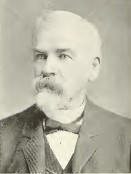 ORLO MELVIN LARAWAY One of the early pioneers
of Minneapolis was O. M. Laraway, the subject of this
sketch, who came to the village by the falls of St.
Anthony in 1857, and has been a prominent factor in its
business life ever since, contributing much toward
making Minneapolis the metropolis that it is today. Mr. Laraway is a
native of the Buckeye State. He was born September 7,
1832, in Chardon, Geauga County, Ohio, the son of
Stephen Van Rensselaer and Phoebe Spafford (Barber)
Laraway. The father was a native of New York, having
been born June 4, 1791, in Phillipstown, and following
the occupation of farming. The mother was born at
Castleton, Vermont, December 21, 1796. They moved with
their family to Ohio in 1830. ORLO MELVIN LARAWAY One of the early pioneers
of Minneapolis was O. M. Laraway, the subject of this
sketch, who came to the village by the falls of St.
Anthony in 1857, and has been a prominent factor in its
business life ever since, contributing much toward
making Minneapolis the metropolis that it is today. Mr. Laraway is a
native of the Buckeye State. He was born September 7,
1832, in Chardon, Geauga County, Ohio, the son of
Stephen Van Rensselaer and Phoebe Spafford (Barber)
Laraway. The father was a native of New York, having
been born June 4, 1791, in Phillipstown, and following
the occupation of farming. The mother was born at
Castleton, Vermont, December 21, 1796. They moved with
their family to Ohio in 1830.
Their son Orlo obtained his early education in
the common schools of his native town, and afterwards
attended Geauga Seminary, where he was for one term a
schoolmate of James A. Garfield. After leaving school
the boy worked on his father’s farm for a year or two,
and then for a few years clerked in stores in Youngstown
and Warren, Ohio.
In 1837 having made up his mind to come to the
North Star State in order to grow up with the country,
he located in Minneapolis. Here he opened a
store for the sale of butter, cheese and dried fruits
(in the shipment of which from Ohio he was interested).
This store was located on the corner where the old Pence
Opera House now stands. The business of this small
provision store rapidly increased Mr. Laraway gradually
adding groceries to his stock, until in 1865 he went
into the wholesale grocery business with H. W. Mills.
Mr. Mills later transferred his interest to J. H. Shuey,
and the firm continued business under the name of
Laraway & Shuey until the death of Mr. Shuey in
1870. Mr. Laraway then, in connection with some other
gentlemen, organized the Minneapolis Plow Works. This
manufacturing concern continued in business until 1882,
when the property of the company was taken for depot
purposes by the Great Northern Railroad Company. At this
time Mr. Laraway was appointed postmaster of
Minneapolis, which office he held for the next four
years.
He had always taken an active interest in the
local affairs of his city, and in 1859 was elected clerk
of the board of town supervisors, and a year later was
elected a member of the town board, which then consisted
of only three members. In 1863 he was appointed
Secretary of the Sioux Commission, a commission which
was authorized by Act of Congress to settle claims of
settlers for depredations committed by the Sioux Indians
during the outbreak of 1862. In February,
1867, when the city of Minneapolis was organized, Mr.
Laraway was elected city treasurer, which office he held
continuously for a period of ten years. In 1886, after
his term as postmaster had expired. Mr. Laraway engaged
in the fire insurance business with his son, under the
firm name of O. M. Laraway & Son, in which business
he is still interested. He is also secretary of the
Mechanics’ & Workingmen’s Loan & Building
Association, which position he has held for the past
twenty years. Mr. Laraway is a member of the Zion
Commandery No. 2, of Minneapolis Lodge No. 19. A. F. and
A. M., and the A. O. U. W. No. 6.
His church connections are with the Plymouth
Congregational Church, of which he is a member. In 1857
he was married to Abbie F. Clark, of Warren, Ohio. They have two
children, F. M. Laraway, who is in business with his
father, and Mrs. A. von Schlegell.
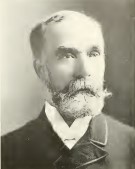 WESLEY M.
LAWRENCE was born July 8, 1840, in Eaton, Compton
County, Quebec. His father’s name was Robert, and his
mother’s maiden name, Jemima Ashmund. They came from
England about the year 1830, and began farm life in the
forests a few miles north of the boundary line of
Vermont. WESLEY M.
LAWRENCE was born July 8, 1840, in Eaton, Compton
County, Quebec. His father’s name was Robert, and his
mother’s maiden name, Jemima Ashmund. They came from
England about the year 1830, and began farm life in the
forests a few miles north of the boundary line of
Vermont.
The
subject of this sketch began his education at a school a
mile and a half from his father’s home, which he
attended more or less until about ten years old, when
his services were in such demand on the farm that he
received very little further education until he was
eighteen years of age. During this time, however, he
read such books and papers as he could procure and
pursued his studies with little or no assistance. At the
age of eighteen, dissatisfied with farm life, he
obtained his parents’ permission to leave home for the
purpose of getting an education. In November, 1858, he
started for Massachusetts, and after tramping for a week
through the towns of Bridgewater, Stoughton and
Randolph, he secured a place in East Randolph, now
Holbrook, where he was permitted to board in
consideration of such services as he could render, and
entered the academy in that town. Here he continued his
studies for six years, and graduated in 1865.
During a season of special religious
interest, he, with forty other students, made a
profession of religion. When he had concluded
his course at the academy his health was much impaired
and, abandoning his long-cherished plan of going to
college, he decided to go West, and in August, 1866,
arrived at Red Wing. This was really his wedding trip,
as shortly prior to this he was married to Miss Elvira
N. Potter, a cousin of Hon. Luke Potter Poland, for
twenty years United States senator from Vermont.
His
health improved in Minnesota, and in the winter of 1867
he began the profession of a school teacher, in the
country near Red Wing. During the following ten years he
was engaged as superintendent of the public schools at
Cannon Falls, Dundas and Owatonna. While engaged in
school work at Dundas, he prepared and published a
number of county and township maps.
Feeling the need of a more
remunerative occupation, he removed, in 1877, to
Minneapolis, and engaged in the laundry business. At
that time the modern steam laundry was a new thing in
the West, and he was fortunate in engaging in it during
the early stages of its growth. Beginning in a small way
at 318 Hennepin Avenue, and using the name of the
street, he called it the Hennepin Steam Laundry. In 1884
he moved to the large block known as numbers 120-122
First Avenue North, and fitted up on a much larger
scale. Success attended his venture from the first,
until now he is the owner of two large establishments in
this city and one in St. Paul. Mr. Lawrence has done
much to develop the industry in which he is engaged. He
took a prominent part in the organization of the
Laundrymen’s National Association in 1883, and has held
various offices in the organization, including that of
president. In politics he was a
Republican until 1872, when the course of the party with
regard to the liquor interests met with his unqualified
disapproval and led to his association with the
Prohibition party. He has been an earnest
worker in the party, has held such positions of official
trust as the party had to give, and headed the city
ticket in Minneapolis in 1885. He is a member of the
Sons of Temperance, the I. O. O. F. and Good
Templars.
While in Red Wing he assisted in
reorganizing the Baptist Church there and became a
member; when he came to Minneapolis he transferred his
membership to the First Baptist Church, and became an
active participant in the work of that church. He is a
liberal supporter of his own church and denomination,
Pillsbury Academy, the temperance cause, all benevolent
objects, and has done much to help the needy and
unfortunate everywhere. Mr. Lawrence earned his first
dollar threshing clover seed with an old-fashioned
wooden flail, for a neighbor, when about fourteen years
of age. It was in the month of January and very cold.
The son of this farmer worked with him and they pounded
clover seed from four o’clock in the morning until ten
at night, for six days, for which he received the
princely sum of two dollars. His family consists of five
children. Irving Wesley,
Mildred Elvira, Lewis Bradford, Earl Russell and
Winthrop Hale. The sixth child born, a boy, died when
thirteen months old.
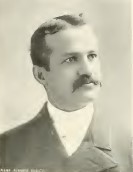 ROBERT LEE LEATHERMAN is pastor of
the Salem English Lutheran Church in Minneapolis. He was born at
Lewistown, Maryland, April 17, 1863. His father, Daniel
Leatherman, was a farmer, well-to-do and prominent in
the community in which he lived. His wife was Caroline
Michael. The family ancestors lived in Frederick County,
Maryland, since 1765, most of them having been engaged
either in mercantile pursuits or in agriculture. Two
brothers of the subject of this sketch have attained
eminence as physicians, one, Dr. M. E. Leatherman, at
Washington, D. C, and the other, Dr. D. L Leatherman, at
Williamsburg, Pennsylvania. ROBERT LEE LEATHERMAN is pastor of
the Salem English Lutheran Church in Minneapolis. He was born at
Lewistown, Maryland, April 17, 1863. His father, Daniel
Leatherman, was a farmer, well-to-do and prominent in
the community in which he lived. His wife was Caroline
Michael. The family ancestors lived in Frederick County,
Maryland, since 1765, most of them having been engaged
either in mercantile pursuits or in agriculture. Two
brothers of the subject of this sketch have attained
eminence as physicians, one, Dr. M. E. Leatherman, at
Washington, D. C, and the other, Dr. D. L Leatherman, at
Williamsburg, Pennsylvania.
Robert Lee began his education in the public
schools of Lewistown, and graduated from Roanoke
College, Virginia, in 1888. He was prominent as a
student, having been favored with a great many society
and class honors. He was given the place of honor in a
competitive contest as one of three orators to represent
the Demosthenean Society at commencement time: was also
one of the speakers of his class on commencement day.
His social relations as a student were with the Phi
Delta Theta fraternity. After completing the course at
Roanoke he entered the Theological Seminary at
Philadelphia, in 1888. He took the three years’ course
there, graduating in 1891, when by a joint vote of a
committee of his classmates and members of the faculty
he was chosen as one of four from the graduating class
to give orations in public at the seminary commencement.
While in the seminary he also served as business manager
for the “Indicator,” a monthly magazine published by the
students.
Mr. Leatherman was ordained in the
office of the Christian ministry at Pottstown,
Pennsylvania, May 26, 1891. After a short vacation,
having previously been called by the mission board of
the English Lutheran Church to serve as one of its
missionaries, he started for his new field of labor in
the Salem Church at Minneapolis. He arrived in
Minnesota, July 18, 1891. He has taken a prominent part
in the work of this denomination and was one of the
founders of the English Lutheran Synod of the Northwest.
He also served as a trustee of Kee-Mar Seminary at
Hagerstown, Maryland. In 1893 he received his degree of
A. M., from Roanoke College, and for the past two years
has been pursuing a post-graduate course of study at the
University of Minnesota, taking up chiefly psychology,
ethics and the history of philosophy. This post-graduate
work has been done in connection with his pastoral work,
and as further preparation for his professional duties.
Mr. Leatherman is not married, and an interesting fact
in that connection is that the first money he earned by
his profession was that received for performing a
marriage ceremony ten days after his arrival in
Minneapolis. The Salem English Lutheran Church is
located at the comer of Twenty-eighth Street and
Garfield Avenue, Minneapolis.
 CLAUDE BASSETT LEONARD is engaged in the
practice of law in Minneapolis. His father is Rev.
Charles H. Leonard, D. D. Dr. Leonard was pastor of the
Church of the Redeemer (Universalist) at Chelsea,
Massachusetts, for about twenty-five years, prior to
1869. Since 1869 he has been professor of homiletic and
pastoral theology in, and dean of the theological school
connected with Tufts College. His mother’s maiden name
was Phebe A. Bassett, daughter of John Bassett, late of
Atkinson, New Hampshire. Mrs. Leonard died
April 19, 1872. The family have been residents of New
England on both sides for several generations. CLAUDE BASSETT LEONARD is engaged in the
practice of law in Minneapolis. His father is Rev.
Charles H. Leonard, D. D. Dr. Leonard was pastor of the
Church of the Redeemer (Universalist) at Chelsea,
Massachusetts, for about twenty-five years, prior to
1869. Since 1869 he has been professor of homiletic and
pastoral theology in, and dean of the theological school
connected with Tufts College. His mother’s maiden name
was Phebe A. Bassett, daughter of John Bassett, late of
Atkinson, New Hampshire. Mrs. Leonard died
April 19, 1872. The family have been residents of New
England on both sides for several generations.
Claude B. Leonard, the second of four children,
was born at Chelsea, Massachusetts, March 26, 1853. He
began his education in the common schools at Chelsea,
which he attended until he was seventeen. He then we}it
to Dean Academy, at Franklin, Massachusetts, where he
prepared for college. He entered the freshman class at
Tufts College in 1872 and was graduated with the degree
of A. B. in 1876.
While in college lie was a member of the Theta
Delta Chi fraternity. On completing his college course
he entered the law office of Starbuck & Sawyer, at
Watertown, New York, and remained with them until
October, 1878. when he was admitted to the bar at a
general term of the supreme court, held at Rochester,
New York.
A month later he turned his face westward in
search of the fresher fields and larger opportunities
promised in the Northwest. He reached Minneapolis
November 7, 1878, and opened a law office in the
Brackett Block, First Avenue South and Second Street. In
the latter part of 1879 he was appointed clerk of the
probate court by Judge John P. Rea, and
remained in that office until 1882. In January 1882, he
formed a law partnership with Edward M. Johnson, the
style of the firm being Johnson & Leonard. In April,
1891, Alexander McCune became a member of the firm, the
style of which has been since that time and is now,
Johnson, Leonard & McCune. This firm is located in
handsome offices in the Farmers’ and Mechanics’ Savings
Bank Building and is engaged in the general practice of
law, special attention being given to real estate,
corporation and probate law. For several years Mr.
Leonard has made a special study of probate law and
practice, and in 1889 he was nominated by the
Republicans for the office of Probate Judge of Hennepin
County. That did not prove to be a good year for
Republican candidates, and Mr. Leonard was
defeated, with every other candidate on the county
ticket. Mr. Leonard is a Past Master of Cataract Lodge,
No. 2, A. F.
& A. M., a member of St. Anthony Falls
chapter, No. 3, R. A. M. He is also a Past Sachem of
Dahkotah Tribe, No 5, Improved Order of Red Men. His
church connections are with the Second Universalist
Church of Minneapolis. He was married at Watertown, New
York, April 14, 1880, to Ella J. Eddy, daughter of Henry
W. Eddy, late of that
city. They have three daughters, Ruth E., Emily B. and
Elva L.
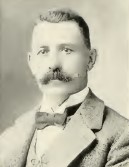 CHARLES ERASTUS LEWIS is president and
treasurer of the Charles E. Lewis Company, grain
commission stockbrokers, of Minneapolis. He was born in
Edgerton, Williams County, Ohio, November 11, 1858. His
father. William S. Lewis, is a native of Richland
County, in that state, where he was born in 1812. When
but seventeen years of age he moved to Williams County,
where he still resides, in moderate circumstances. He
has always been a stalwart Republican, and from 1860 to
1864 served as sheriff of his county. Eliza Wanamaker
(Lewis), the mother of Charles E., was also a native of
Ohio. She was born in 1811 in Trumbull County, and moved
to Willliams County in 1830, where she resided until her
death in 1887. The Wanamakers, of Pennsylvania, are near
relatives. CHARLES ERASTUS LEWIS is president and
treasurer of the Charles E. Lewis Company, grain
commission stockbrokers, of Minneapolis. He was born in
Edgerton, Williams County, Ohio, November 11, 1858. His
father. William S. Lewis, is a native of Richland
County, in that state, where he was born in 1812. When
but seventeen years of age he moved to Williams County,
where he still resides, in moderate circumstances. He
has always been a stalwart Republican, and from 1860 to
1864 served as sheriff of his county. Eliza Wanamaker
(Lewis), the mother of Charles E., was also a native of
Ohio. She was born in 1811 in Trumbull County, and moved
to Willliams County in 1830, where she resided until her
death in 1887. The Wanamakers, of Pennsylvania, are near
relatives.
Charles E. had only the advantages of a common
school education, attending the public schools of his
neighborhood until he was but thirteen years old. He had
learned telegraphy, and at this age secured a position
on the Lake Shore & Michigan Southern railway as
night operator. Three years later, in 1874, he moved to
Hannibal, Missouri, where he remained until 1880. During
the six years he lived at Hannibal he was in the employ
of several different railroads as an operator and clerk.
Leaving Hannibal he went to Chicago, entering the employ
of the Chicago, Rock-Island & Pacific railway in the
ticket audit department. In 1883 he came
to Minneapolis, and for the next two years he was
employed as a clerk and operator with the Minneapolis
& St, Louis railway, the Western Union Telegraph
Company, the Minneapolis Tribune Company and the
Chicago, Milwaukee & St. Paul railway, from 1885 to
1888 he was in the employ of Pressey, Wheeler &
Company, commission merchants and stockbrokers.
After their failure in the latter year, Mr. Lewis
decided to go into business for himself. The firm name
of his concern has been changed two or three times since
that date, but on July 1, 1896, it was incorporated as
the Charles E. Lewis Company. This firm has been built
up by Mr. Lewis’ industry and conservative business
methods until it is now one of the solid and substantial
grain commission firms of Minneapolis. Mr. Lewis’
political affiliations have always been with the
Republican party. He is a member of the Minneapolis
Commercial, Town and Country Clubs and the Long Meadow
Gun Club, and the Hummer Fishing and Hunting Club. He
was married in 1884 to Mary E. Norris, of Hannibal,
Missouri.
They have no
children.
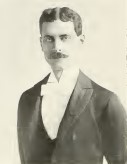 HENRY JOSEPH LEWIS It is perhaps indicative
of the cosmopolitan character of the city of Minneapolis
that men who have traveled widely find the city a
congenial place of residence. Among the numerous men of
this class is Henry J. Lewis, dealer at wholesale in
cigars. Mr. Lewis is but forty years of age, but has
seen more of the world than falls to the lot of one man
in a thousand in a whole lifetime. While still a young
man he was appointed foreign agent for the White Sewing
Machine Company, of Cleveland, Ohio. In the interests
of that concern he visited all the South American
countries—United States of Colombia, Ecuador, Peru,
Bolivia, Chili, Patagonia, the Argentine Republic,
Uruguay, Paraguay and Brazil. He afterwards visited the
West Indies. In the course of his travels in South
America, in many places rarely visited by North
Americans, he had many entertaining and exciting
adventures. HENRY JOSEPH LEWIS It is perhaps indicative
of the cosmopolitan character of the city of Minneapolis
that men who have traveled widely find the city a
congenial place of residence. Among the numerous men of
this class is Henry J. Lewis, dealer at wholesale in
cigars. Mr. Lewis is but forty years of age, but has
seen more of the world than falls to the lot of one man
in a thousand in a whole lifetime. While still a young
man he was appointed foreign agent for the White Sewing
Machine Company, of Cleveland, Ohio. In the interests
of that concern he visited all the South American
countries—United States of Colombia, Ecuador, Peru,
Bolivia, Chili, Patagonia, the Argentine Republic,
Uruguay, Paraguay and Brazil. He afterwards visited the
West Indies. In the course of his travels in South
America, in many places rarely visited by North
Americans, he had many entertaining and exciting
adventures.
Mr. Lewis is of Welsh descent. His father’s
ancestors emigrated to Rhode Island from Wales, and
afterwards moved to South Wales, Eric County, New York,
about twenty-five miles south of Buffalo. Here Joseph B.
Lewis was born and grew to manhood, marrying Martia Ann
Baker, whose Welsh ancestors had also found their way to
the same locality.
Their son Henry was born at South Wales, and the
family lived there until he was nine years old, when
Mrs. Lewis died. She was an earnest Christian, a member
of the Free Will Baptist church, and a woman of strong
personal character. After the death
of his wife Mr. Lewis moved to St. Joseph, Michigan. He
is a farmer in good circumstances, and having a
reputation for honesty and square dealing.
The education of young Henry was that afforded by
the district schools of New York and Michigan. He early
entered business life as a clerk for M. & A.
Shepard, jewelers of St. Joseph, in whose employ he
continued for several years. His engagement with the
White Sewing Machine Company was made while he was still
a very young man. While in the West Indies he became
interested in Havana tobaccos, and secured a thorough
acquaintance with the business which has since been
invaluable to him. In 1886 he came to Minnesota as the
Northwestern representative of Spaulding & Merrick,
tobacco manufacturers of Chicago, and made his
headquarters in Minneapolis. Three years
later he was called to Chicago by the firm to manage the
sales department of their business. However, the climate
of Chicago was not congenial, and he soon removed to
Duluth and entered the wholesale and retail cigar and
tobacco business, the firm being Lewis & Swain. In
1890 he was induced by Harrison, Farrington & Co.,
wholesale grocers of Minneapolis, to remove to their
city and take the management of the wholesale cigar
department of their business. Mr. Lewis continued with
the house until 1895 when he again commenced business on
his own account in the same line — wholesale cigars.
In politics Mr. Lewis is a Republican. He is not
a politician, but takes, a citizen’s interest in
political affairs, and in 1894 was a delegate to the
Congressional convention that nominated Loren Fletcher.
Mr. Lewis is a.
Scottish Rite Mason, and has taken the thirty
second degree. He is a member of the Minneapolis
Commercial Club. On August 21, 1875, he was married to
Miss Carrie Amelia Bovee of Coldwater, Michigan,
daughter of Mr. and Mrs. Eli W. Bovee, prominent people
of that place. Miss Jennie Georgiana Lewis is their only
child. Mrs. Lewis and her daughter are both members of
St. Paul’s Episcopal Church of Minneapolis. Mr. Lewis has been uniformly successful in his
business enterprises. He is a firm believer in
advertising, and has demonstrated its efficacy. In the
course of his extensive travels in this country and
abroad, and in his active business career of ten years
in the Northwest, he has made hosts of friends and
enjoys a very wide
acquaintance.
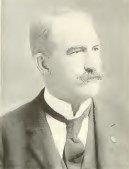 WILLIAM M.
LIGGETT was born in 1846 in Union County, Ohio, a region
where the farmers were among the most intelligent,
enterprising and public-spirited men of the community.
As a farmer’s boy, Mr. Liggett’s experience was not
different from that of most farmers of thirty-five years
ago, but he was scarcely in his teens before the intense
political struggle which preceded the Civil War engaged
the attention of every thinking man. A good farm is the
first nursery for boys in any free country, but between
1856 and 1861, when every night round the fireside and
at every neighborhood gathering national questions were
discussed with a tenor and seriousness that prepared men
for the fiery furnace of the impending war, a farm was a
rare school for the development of character. WILLIAM M.
LIGGETT was born in 1846 in Union County, Ohio, a region
where the farmers were among the most intelligent,
enterprising and public-spirited men of the community.
As a farmer’s boy, Mr. Liggett’s experience was not
different from that of most farmers of thirty-five years
ago, but he was scarcely in his teens before the intense
political struggle which preceded the Civil War engaged
the attention of every thinking man. A good farm is the
first nursery for boys in any free country, but between
1856 and 1861, when every night round the fireside and
at every neighborhood gathering national questions were
discussed with a tenor and seriousness that prepared men
for the fiery furnace of the impending war, a farm was a
rare school for the development of character.
Enlisting at the age of seventeen in the
Ninety-sixth Ohio, young Liggett served with honor in
the campaign of Red River under Banks, and was in the
siege of Fort Gaines and Morgan, Spanish and
Blakely.
The capturing of Fort Blakely with seven thousand
prisoners was the last engagement of the war. At the
close of the war he declined a commission, and returned
to the home farm. Afterwards accepting a situation in
the Bank of Marysville, one of the most conservative
banking institutions in his native state, he gathered a
business experience and knowledge of affairs which has
since served him well.
Interesting himself in politics he became
recognized as a local leader, and was twice elected
treasurer of his county. In the meantime he had been
prominent in the organization of the National Guard of
the state, and at the time of the great riot in
Cincinnati, when the court house was burned and the
whole city terrorized, he was colonel of the Fourteenth
Ohio National Guard, and commanded the battalion that
cleared the streets of the mob, ended the riot and
restored peace and order to the city, being wounded
severely in the brief time the street firing lasted.
Soon after this episode, in 1884, he formed a
business partnership with an old friend and comrade,
Major Wilcox, who had already established Grandview
Farm, in Swift County. Stepping into the management of
this property he was soon recognized as one of the
leading agriculturists and breeders of the state and
found ample room for the exercise of all the
administrative ability at his command, and use for both
his farm and his business experience. His ideals in
domestic stock were of the practical rather than the
fancy type; his success was a foregone conclusion.
During his seven years of residence on the farm, no farm
in the Northwest made more sales or did more to improve
the quality of farm stock.
Several offices of honor have come to Colonel
Liggett unsolicited. In 1888 he was appointed regent of
the State University by Governor McGill, as a
representative of the farmers of the state, and has
since been chairman of the Agricultural Committee, and
to him, as much as any other, is due the successful
opening of the Minnesota School of Agriculture, now
generally recognized as a model. He is also a
member of the State Board of Agriculture, and the Board
of Farmers’ Institute, and a member of the Executive
Committee of the National Cattle Growers’ Association.
In 1890 he was elected secretary of the State
Agricultural Society, and the successful fair of 1890
was held under his management. He would have been his
own successor if Governor Merriam, recognizing his
executive ability, had not appointed him one of the
Railroad Commissioners of the state, in which capacity
he served a second term as chairman of the commission.
In August, 1893, he was asked by the board of Regents to
take the position of acting director of the School of
Agriculture of the State Experiment Farm, giving all his
spare time to the duties of the position. In October,
1896, Colonel Liggett resigned as Railroad and Warehouse
Commissioner to accept the position the dean of the
Agricultural School and director of the Experiment
Station, to which he was elected by the Board of
Regents, October 14, 1896.
It is Colonel Liggett’s strongest
point that he never disappoints expectations. He has a
genial and cordial address which wins friends, and the
sterling qualities which retain them. With good
judgment, a clear mind and rare executive ability, he
easily takes rank with the leading agriculturists and
breeders of the country, and as he is yet a young man it
is reasonable to expect a long and useful life in his
chosen calling.
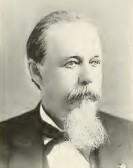 WILLIAM LOCHREN was born on April 3, 1832, in
Tyrone County Ireland. His father died about a year
later, and in 1834 his mother, with other relatives,
came to this country and located in Franklin County,
Vermont. Until 1850, the family lived in northern
Vermont and near the Canadian line. William attended the
common school and worked on the farm. In the spring of
1850 he went to Auburn, Massachusetts, and for three
years was engaged in farm labor, and in a sawmill,
dividing his time between these occupations and his
studies at the academy. He then returned to Franklin
County, Vermont. In June, 1856, he was admitted to the
bar at St. Albans, Vermont, and in the following month
he came to Minnesota. WILLIAM LOCHREN was born on April 3, 1832, in
Tyrone County Ireland. His father died about a year
later, and in 1834 his mother, with other relatives,
came to this country and located in Franklin County,
Vermont. Until 1850, the family lived in northern
Vermont and near the Canadian line. William attended the
common school and worked on the farm. In the spring of
1850 he went to Auburn, Massachusetts, and for three
years was engaged in farm labor, and in a sawmill,
dividing his time between these occupations and his
studies at the academy. He then returned to Franklin
County, Vermont. In June, 1856, he was admitted to the
bar at St. Albans, Vermont, and in the following month
he came to Minnesota.
In August he located at St. Anthony where he
was engaged first in the office of J. S. and D. M.
Demmon, and later in the office of George E. H.
Day. In the
spring of 1857 he formed a partnership with James R.
Lawrence, under the firm name of Lawrence & Lochren.
This partnership was dissolved in 1859, after which
Judge Lochren practiced alone until the outbreak of the
Civil War. He enlisted as a private in Company E, First
Regiment Minnesota Volunteers, on April 29, 1861. He was
made sergeant and served with the regiment in the
campaigns of 1861, 1862 and 1863. He participated in the
battles of Bull Run, Balls Bluff, in front of Yorktown,
West Point, Fair Oaks, Peach Orchard, Savage Station,
Glendale, Frazer’s Farm, Malvern Hill, Malvern Hill
Second, South Mountain, Antietam, Charlestown,
Fredericksburg, Gettysburg and many lesser affairs. On
September 22, 1862, he was promoted to be second
lieutenant and on July 3, 1863, became first lieutenant;
and acted as adjutant of the regiment for three months
following the battle of Gettysburg. On December 30,
1863, he resigned on a surgeon’s certificate of
disability. Before the war he had been city attorney and
alderman of the city of St. Anthony.
On leaving the army he returned to St. Anthony
resumed the practice of law, and soon formed a
partnership with Captain O. C. Merriman, under the firm
name of Merriman & Lochren. This partnership
continued about three years. During most of that time,
and until St. Anthony was merged into Minneapolis, Judge
Lochren was city attorney of St. Anthony. In November,
1868, he was elected state senator and served in the
legislature of 1869 and 1870. In the spring of 1869 he
formed a law partnership with William W. McNair, and
later John B. Gilfillan became a member of the
firm. In
the years of 1877 and 1878 Judge Lochren was city
attorney of Minneapolis, and in November, 1881, Governor
John S. Pillsbury appointed him judge of the district
court of the Fourth Judicial District, and in 1882 and
again in 1888 he was elected for the full term of that
office without opposition. In April, 1893,
Judge Lochren was appointed commissioner of pensions by
President Cleveland, and continued the discharge of the
duties of this office until May 20, 1896, when he
assumed the office of the United States district judge
for the District of Minnesota, to which he had just been
appointed by President Cleveland and confirmed by the
United States senate.
Judge Lochren has always been a
Democrat. In 1865 he was the candidate of that party for
attorney general, in 1874 for judge of the supreme
court, and in 1875 for the United States senate; but
upon the adoption of the platform of that party in 1896,
by the Chicago convention, Judge Lochren, regarding the
same as undemocratic, unsound and dangerous, refused to
support the candidates nominated by that convention.
Judge Lochren was married on September 26, 1871, to Mrs.
Martha A. Demmon, who died in February, 1879. On April
19, 1882, he was married to Miss Mary E. Abbott. They
have one son, William A., who was born on February 26,
1884. Judge Lochren, since the war, has maintained his
residence in Minneapolis, where he is a highly respected
citizen.
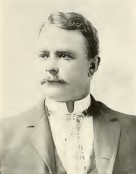 HAROLD
JOHAN LOHRBAUER, of Minneapolis, is a native of
Christiania, Norway, where he was born February 23,
1858. His father, Johan Lohrbauer, is the owner and
operator of a cotton mill at Christiania, Norway. His
mother’s maiden name was Trine Boettger. Johan Lohrbauer
and his wife are highly respected people in the
community in which they live. They were born and reared
in Christiania, and Mr. Lohrbauer has won, by his own
efforts, the competency and position which he occupies,
and is now the controlling spirit of a manufacturing
concern employing about two hundred people. HAROLD
JOHAN LOHRBAUER, of Minneapolis, is a native of
Christiania, Norway, where he was born February 23,
1858. His father, Johan Lohrbauer, is the owner and
operator of a cotton mill at Christiania, Norway. His
mother’s maiden name was Trine Boettger. Johan Lohrbauer
and his wife are highly respected people in the
community in which they live. They were born and reared
in Christiania, and Mr. Lohrbauer has won, by his own
efforts, the competency and position which he occupies,
and is now the controlling spirit of a manufacturing
concern employing about two hundred people.
The subject of this sketch received his early
education in one of the private schools of Christiania
until at the age of sixteen, when he spent a year with
his father in the factory, the intention being to
educate him in that line of business. For the same
purpose he was sent to Horton, a town about fifty miles
from Christiania, to take a course in mechanical
engineering. At the age of eighteen he entered a
mercantile high school, the Christiania
“Handelsgymnasium,” in order to acquire a business
education. He spent two years in that institution and
finished the fourth best in a class of forty students.
This gave him a thorough business education, including a
fair knowledge of the principal modern languages.
Harold then embarked for himself and has relied
upon his own resources and energies ever since. His
first business engagement was in an importing house in
Christiania, where he acted as corresponding clerk in
the English, German and French languages, later he
entered his father’s business with a view as before
stated to succeed him in the same. Then it happened that
an old friend and schoolmate of his returned on a visit
from America. His tale about his own prosperity and the
easy progress any young man with business education and
ability undoubtedly could make in that far away country,
brought Harold to look at his own prospects in a
different light from what he had done before. In short
he decided to leave it to one of his younger brothers to
take up the path which his father had laid out before
him and to follow his friend to America.
So he came to St. Paul, Minnesota, in 1882, and a
week after his arrival obtained a situation in The
Savings Bank of St. Paul and was employed there for
eighteen months. He then entered the service of a land
and immigration agency, with which he was connected
until he started a land and immigration bureau on his
own account about six years later. He now maintains
offices for the conduct of this line of business both in
Minneapolis and St. Paul, and is meeting with gratifying
success His business is chiefly that of colonizing
lands, acquired either by option or purchase. His operations
have been chiefly in Northwestern Wisconsin. He has been
the means of moving from the shops and factories many
men who have found it profitable for them to become
owners of farms, and so far has settled and sold in this
way about fifty-five thousand acres, and located between
six and seven hundred families, representing, probably,
from twenty-five hundred to three thousand people. This
extensive business has required close attention, and to
it Mr. Lohrbauer has given his best energies and
superior business ability. He was married in 1882 to
Maren Strom, at Harstad,
Norway.
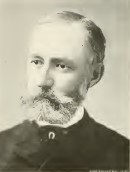 CHARLES
MORGRIDGE LORING, is known as the father of the park
system of Minneapolis, and while he has always been
prominently identified with nearly every important
movement for the benefit of the city, he will be held in
especial esteem by the citizens of Minneapolis for the
invaluable service which he has rendered in planning and
securing for the city its admirable park system. CHARLES
MORGRIDGE LORING, is known as the father of the park
system of Minneapolis, and while he has always been
prominently identified with nearly every important
movement for the benefit of the city, he will be held in
especial esteem by the citizens of Minneapolis for the
invaluable service which he has rendered in planning and
securing for the city its admirable park system.
Mr.
Loring is a native of New England, where the family name
is well known. The first of the family was Thomas
Loring, an early settler from England. The grandfather
of C. M. Loring was a
successful and honored teacher in Portland, Maine, where
he was known as “Master Loring.” His son, Captain Horace
Loring, was a shipmaster, voyaging to the West Indies.
He married Sarah Wiley, whose mother, Margaret Smith
Wiley, was a niece of “Parson Smith,” a noted clergyman
of Portland, Maine. She was of Scotch descent.
Charles M. Loring, the subject of
this sketch, and a son of Horace Loring and Sarah Wiley
(Loring), was born at Portland Maine, November 13, 1833.
His father took him while yet a lad on his voyages and
destined him to be a navigator. He became a mate on his
father’s ship and spent some time in Cuba, but the life
of a shipmaster was not to his taste, and he, to the
great disappointment of his friends, relinquished that
which was the height of every Maine boy’s ambition, a
chance to become a sea captain, and started for the West
in 1856. He located first at Chicago and engaged in
wholesale business with B. P. Hutchinson, the well known
grain speculator. Ill health at that time brought Mr.
Loring to Minneapolis, when through the aid of his
friend, Loren Fletcher, he obtained employment with
Dorilus Morrison as the manager of his supply store in
connection with his lumber business. This was in 1860.
The following year he joined Mr. Fletcher in the general
merchandise business in Minneapolis, under the firm name
of Fletcher & Co., which firm is still in existence,
and the oldest in Minneapolis.
Fletcher & Co. were very successful in their
business, and the firm became one of the strongest in
the city. In 1868, together with W.
F. Cahill, they purchased the Holly Mill and
operated it until 1872, when they sold it and bought the
Galaxy mill, which they successfully operated for a
number of years. In 1873 they also became the principal
owners of the Minnetonka mill, located near Lake
Minnetonka. Since 1880 Mr. Loring has not given active
attention to his interests in the milling business, but
has depended in that respect chiefly upon his son.
He
has, however, been active in other lines of business,
and has become a large owner of real estate and other
property which required his attention.
Mr. Loring is a man of refined tastes, and a
great lover of nature, and is devoted to horticulture in
its most artistic aspect, and when the first board of
park commissioners was selected his name was placed at
the head of the list, although he was absent at the time
in Europe. This board was
organized in 1883, and for the next seven years Mr.
Loring gave largely of his time and ability to the
acquirement and development of the system of parks and
boulevards for which the city of Minneapolis is justly
famous. In recognition of his
great services in this regard, the name of Central Park
was changed and that beautiful pleasure ground of the
people will always be known as Loring Park. When the
state decided to establish a state park at Minnehaha he
was appointed one of the commissioners.
This property has since become a part of the park
system of Minneapolis, and the acquirement of that tract
around the romantic and historic waterfall was due to
Mr. Loring. Notwithstanding his impaired health in later
years, Mr. Loring has been actively interested in
various business enterprises. He was one of the
projectors of the North American Telegraph Company, and
has been its president since its organization in 1885.
In 1886 he was elected president of the Minneapolis
Chamber of Commerce, and held that office until 1890,
when he declined a re-election.
Upon the organization of the Northwestern
Consolidated Milling Company, including the Galaxy mill
of which he was part owner, he was made a director of
the company and still retains that position. He has also
been identified with various financial institutions of
the city.
Notwithstanding the activity of his
business life, Mr. Loring has found time to gratify his
refined tastes, and is a gentleman of culture and
attainments. Never of very rugged physique, he has of
late years found it desirable, owing to the severity of
the Minnesota climate, to spend his winters on the
Pacific coast, where he has acquired, at Riverside,
California, a fruit ranch. He has also spent
considerable time in travel abroad as well as in this
country, and has availed himself of the opportunity thus
afforded to gratify his tastes for art and
learning. He is a man of most
kindly manners and is held in highest esteem by his
fellow citizens. He is a Republican in politics, and in
religion liberal, yet sincere. He cast his first vote
for John C. Fremont. He recalls
with pleasurable recollection the fact that the first
money he ever earned was by selling the New Year’s
address of a newspaper carrier, from which his receipts
were $7.32.
Mr.
Loring was married in 1855 to Emily S.
Crosman, of Portland, Maine, who died March 13,
1894. Their children were Eva Maria, deceased, and
Albert C, who is the secretary and treasurer of the
Consolidated Milling Company. Mr. Loring was married
again, November 28, 1895, to Miss Florence Barton,
daughter of A. B. Barton, of
Minneapolis.
 STEPHEN BROWN LOVEJOY or as his friends like
to call him, “Steve” Lovejoy, is one of the substantial
business men of Minneapolis, and is prominent in local
and state politics. Mr. Lovejoy came to Minneapolis when
a small boy with his father and mother who emigrated in
1854 from Maine. STEPHEN BROWN LOVEJOY or as his friends like
to call him, “Steve” Lovejoy, is one of the substantial
business men of Minneapolis, and is prominent in local
and state politics. Mr. Lovejoy came to Minneapolis when
a small boy with his father and mother who emigrated in
1854 from Maine.
The family is an old one and carried an honorable
name through the Revolution and the War of 1812. Mr.
Lovejoy’s great-grandfather, Abial Lovejoy, lived at
Sidney, Maine. He was a ship owner and lumber
manufacturer. The ship landing at that place is still
called “Lovejoy’s Landing.” His son, William, was also a
ship owner, and served as a lieutenant in the War of
1812. His
son, John L. Lovejoy, father of Stephen B., was a lumber
manufacturer in Calais, Maine. He married Miss Ann M.
Albee, who was descended from William Albee, a
lieutenant in the Revolution, who rendered his country
distinguished service as commandant of the fort at
Machias, Maine, in repulsing a British man-of-war which
tried to ascend the river. Mrs. Lovejoy’s ancestors were
largely interested in lumbering operations.
Upon his settlement in St. Anthony, now a part of
Minneapolis. Mr. Lovejoy commenced the manufacture of
lumber in partnership with John L. Brockway, under the
firm name of Lovejoy & Brockway. He died in 1860.
Stephen B. Lovejoy was born at Livermore, Maine,
on the Lovejoy farm on January 19, 1850. He came West
with his parents in 1854 and grew up in Minneapolis,
surrounded by the influence of the bustling frontier
town. When sixteen years of age he was sent East to the
Pennsylvania Military Academy at Chester, and the
following year went to the Clinton Liberal Institute at
Clinton, New York. Here he won the second prize for
essay at the annual commencement. On returning from
school that year he entered the First National Bank of
Minneapolis and remained with the bank for five years.
When he left he was head bookkeeper. He left the bank to
take a position as manager of a flour mill at Manomin,
Minnesota. In the spring of the following year, 1875, he
was elected treasurer and agent of the Mississippi and
Rum River Boom Company. This position he held for eleven
years. Governor McGill appointed Mr. Lovejoy surveyor
general of logs and lumber in 1877; he held the office
for one term. In 1884 Mr. Lovejoy formed a partnership
with John Woods as railroad contractors. This
partnership was dissolved in 1892, since which time Mr.
Lovejoy has continued the business by himself. He has
been a stockholder in several of the large corporations
and banks of the city, and from its organization until
it was dissolved in 1895, he was a member of the flour
milling firm of Lovejoy, Hinrichs & Co. Mr. Lovejoy
has been very successful in business, and is counted as
one of the substantial businessmen of Minneapolis. Since
voting for Grant in 1872, Mr. Lovejoy has been a staunch
Republican. Though seldom holding office he has been
very prominent in political affairs in Minneapolis, and
has been a member of the county or city committees of
his party frequently during the past twelve or fifteen
years. For
four years past he has been chairman of the
congressional committee, and during the same period has
been a member of the campaign committee. At the last
organization of the committee he was reappointed
chairman for the ensuing two years. He was a member of
the old city water board, under appointment by Mayor
Ames, after two months of service he was obliged to
resign, not having time to devote to the affairs of the
office.
In 1895 he was elected to the state legislature
from the thirty-first district. While serving in the
house of representatives he introduced, and was
instrumental in securing the passage of the law
regulating child labor. Mr. Lovejoy was married on
October 13, 1872, to Miss E. Louise Morgan, a daughter
of Brigadier General George N. Morgan, who was formerly
colonel of the famous old First Minnesota Volunteer
Infantry. They have four children, Emma L., Edith D.,
Ethel M., and Marjorie. Mr. Lovejoy is a
Thirty-second degree Scottish Rite Knight Templar and a
member of Zuhrah Temple.
The information
on Trails to the Past © Copyright
may be used in personal family history research, with
source citation. The pages in entirety may not be
duplicated for publication in any fashion without the
permission of the owner. Commercial use of any material
on this site is not permitted. Please respect the
wishes of those who have contributed their time and
efforts to make this free site possible.~Thank
you! | | | |
